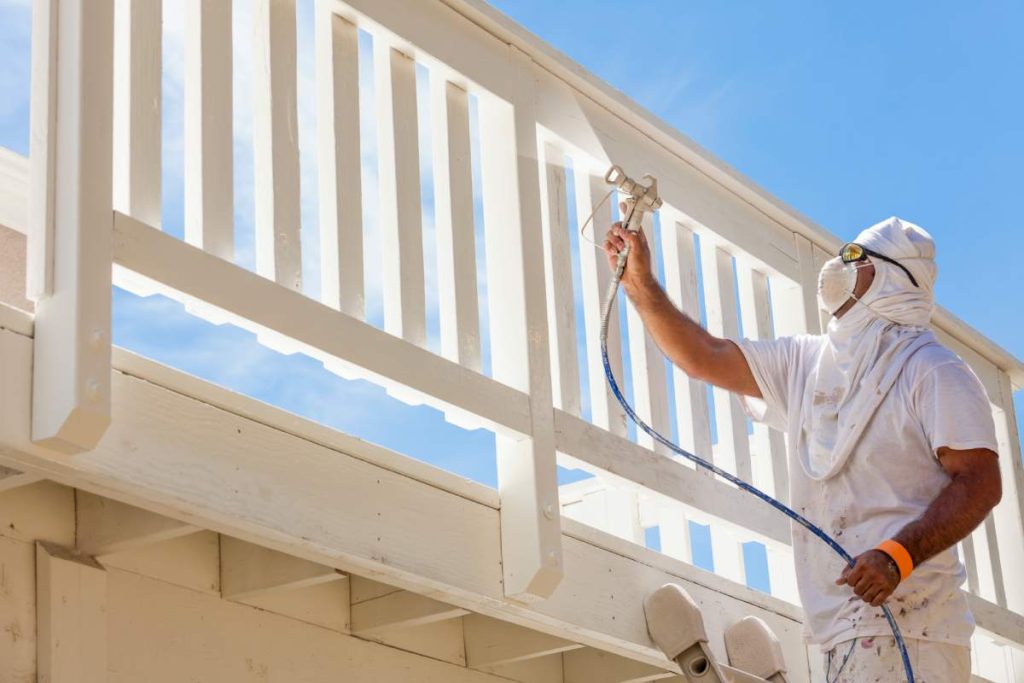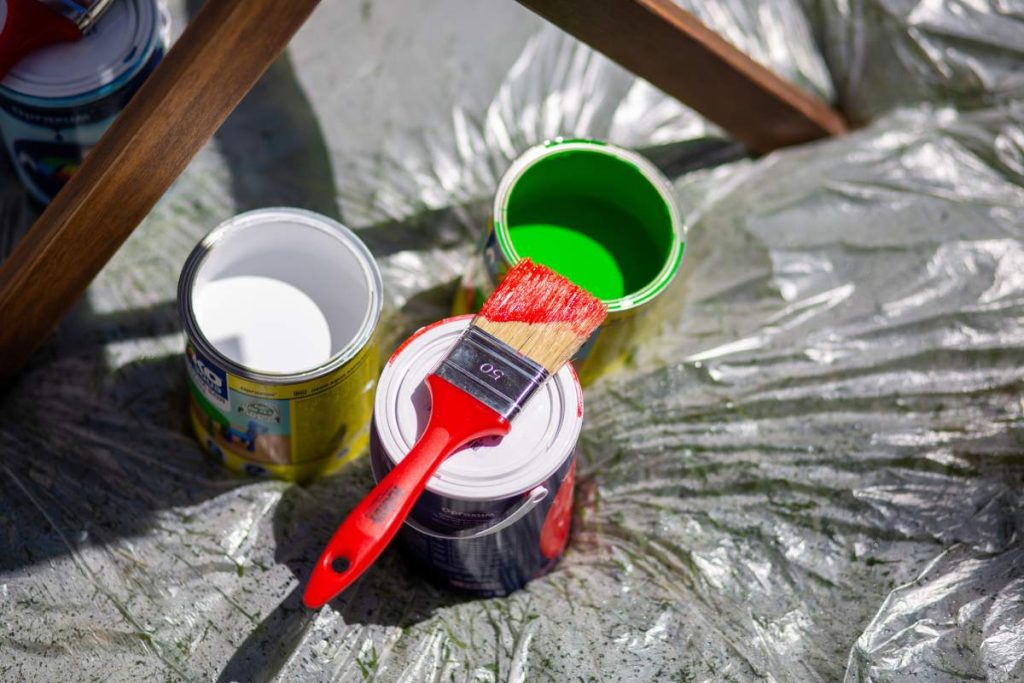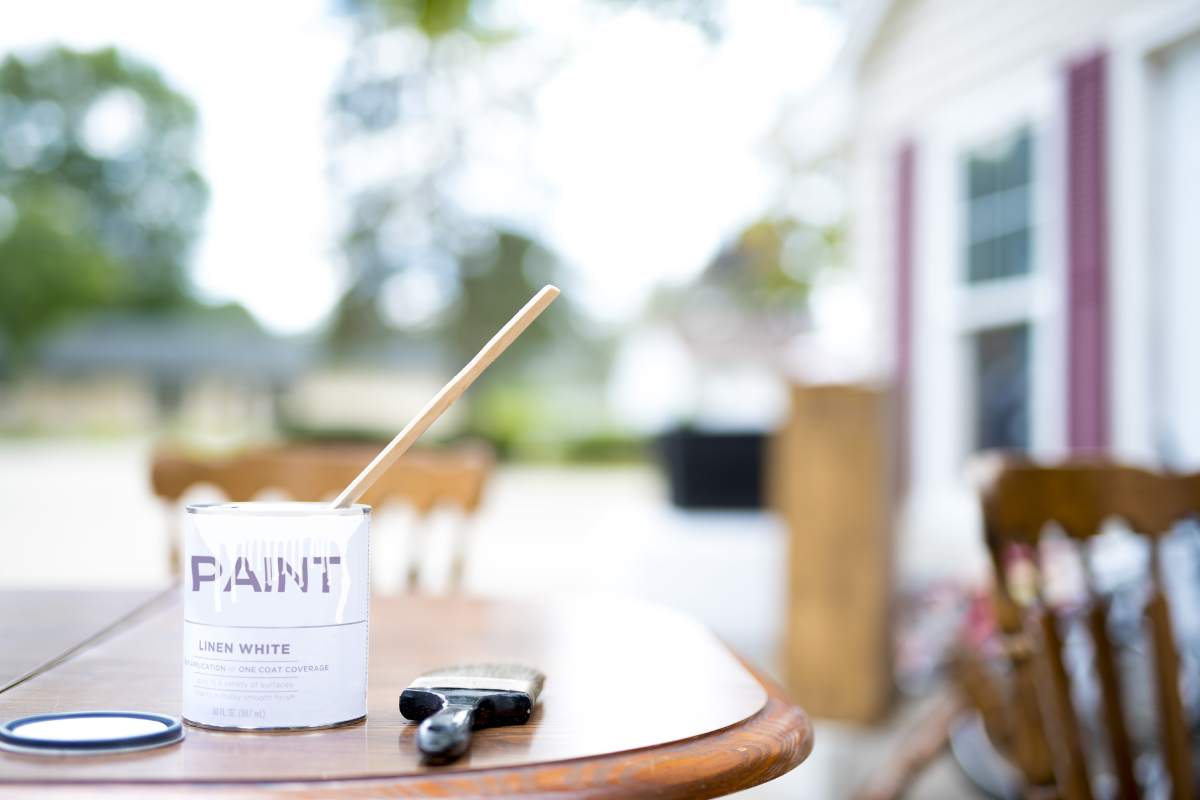So, when you’re about to start a painting project, one of the big decisions you’ll have to make is choosing the right type of paint.
Both interior and exterior paints are there to add color and protect surfaces, but they’re made differently to meet the specific demands of where they’ll be used. It’s really important to know the differences between these two types of paint, not just to get a great result, but to make sure your paint job holds up well over time.
In this article, we’ll talk about the main differences between interior and exterior paints and whether you can switch them up.
You might also read:
What is the Difference Between Interior and Exterior Paint?
When it comes to painting your home, choosing the right type of paint is essential for achieving the best results. One of the first decisions you’ll need to make is whether to use interior or exterior paint.
While both serve the same fundamental purpose—adding colour and protection to surfaces—they are formulated differently to meet the specific needs of the areas they are designed for.
1. Composition
The primary difference between interior and exterior paint lies in their composition. Paints are made up of three main components: pigment (which gives the paint its colour), binder (which holds the pigment together), and solvent (which keeps the paint in a liquid state until it’s applied). The difference between interior and exterior paint comes down to the type of binder and additives used.
- Interior Paint: This type of paint uses a binder that’s designed to be more rigid once it dries. This rigidity makes the paint more resistant to scrubbing and cleaning, which is important for interior walls that might need regular maintenance. Interior paints also contain fewer volatile organic compounds (VOCs), making them safer for indoor air quality.
- Exterior Paint: Exterior paint contains binders that are more flexible, allowing the paint to expand and contract with the changing temperatures outside. This flexibility helps prevent the paint from cracking or peeling under harsh weather conditions. Exterior paints also contain more additives to combat mildew, fading, and moisture. However, they typically have higher VOC levels, which are less of a concern outdoors.

2. Durability and Protection
The environment in which the paint is used greatly influences its durability and the type of protection it offers.
- Interior Paint: Designed for areas sheltered from the elements, interior paint doesn’t need to withstand rain, snow, or direct sunlight. However, it does need to be durable enough to resist scuffs, stains, and frequent cleaning. Interior paint is often designed to be scrubbed without losing its colour or finish, making it ideal for high-traffic areas like hallways, kitchens, and bathrooms.
- Exterior Paint: This paint is formulated to endure the toughest outdoor conditions. It must resist damage from UV rays, extreme temperatures, moisture, and even pests. The added durability makes exterior paint thicker and often more expensive, but it’s necessary for ensuring the longevity of your home’s exterior.
3. Aesthetic Differences
While both types of paint come in a wide range of colours and finishes, their appearance can differ over time due to environmental factors.
- Interior Paint: Since it doesn’t face the same environmental challenges as exterior paint, interior paint maintains its colour and finish longer. It also tends to have a smoother finish, which can make it easier to achieve a polished look inside your home.
- Exterior Paint: Despite advances in technology, exterior paint will fade over time due to constant exposure to sunlight. However, modern exterior paints are designed to fade less dramatically and last longer than older products. Additionally, the finish of exterior paint is usually more textured to help it withstand the elements.
4. Application Differences
The way interior and exterior paints are applied also varies slightly.
- Interior Paint: Because interior paint doesn’t have to battle the elements, it can be applied in thinner coats, allowing for easier touch-ups and a more refined finish. It’s also easier to work indoors, where the climate is controlled, and drying times are more predictable.
- Exterior Paint: Applying exterior paint requires more preparation and effort. Surfaces must be properly cleaned, primed, and sometimes treated for issues like mildew. Exterior paint is usually applied in thicker layers to ensure adequate protection, and it often takes longer to dry due to outdoor conditions.

Can I Use Exterior Paint in the Interior and Vice Versa?
Using the right type of paint for the specific environment is crucial for achieving the best results and ensuring the longevity of your paint job. However, you might wonder if you can use exterior paint inside your home or interior paint on exterior surfaces.
While it is technically possible, there are significant reasons why it is not recommended. Let’s explore why you should stick to the intended use of each paint type.
1. Using Exterior Paint Indoors
Exterior paint is designed to withstand harsh outdoor conditions, such as extreme temperatures, moisture, and UV rays. Because of this, it contains higher levels of volatile organic compounds (VOCs) and other chemicals that help it endure these elements. While these components are beneficial for outdoor durability, they can be problematic indoors.
- Health Concerns: Exterior paint typically contains more VOCs, which can release fumes into the air as the paint dries. These fumes can cause respiratory issues, headaches, dizziness, and other health problems, particularly in enclosed spaces where ventilation is limited. Even after the paint dries, VOCs can continue to off-gas for some time, affecting indoor air quality.
- Odour: Exterior paint often has a stronger odour due to its chemical composition. The smell can linger in your home, making living spaces uncomfortable, especially in areas like bedrooms and living rooms.
- Finish and Appearance: Exterior paint is designed to be more durable and resistant to outdoor elements, but this can result in a rougher, thicker finish when used indoors. The paint might also take longer to dry, and the finish may not look as smooth or polished as interior paint would.
2. Using Interior Paint Outdoors
Interior paint, on the other hand, is not built to handle the tough conditions found outside. It lacks the necessary durability and protective qualities that exterior paint offers.
- Weather Resistance: Interior paint doesn’t have the flexibility or the protective additives required to withstand temperature fluctuations, moisture, and UV exposure. As a result, using interior paint on exterior surfaces can lead to rapid deterioration. It may crack, peel, or fade quickly, leading to a poor appearance and the need for frequent repainting.
- Lack of Protection: Interior paint does not contain the mildewcides and UV blockers that exterior paint does. This means that surfaces painted with interior paint are more likely to develop mould, mildew, and sun damage, further compromising the integrity of the paint job.
- Cost and Effort: While interior paint might initially be less expensive, the need for frequent touch-ups and repainting when used outdoors will likely cost more in the long run. The time and effort required to maintain the paint job can also be considerable.
3. Situations Where Exceptions Might Be Considered
In some cases, you might consider using exterior paint indoors or vice versa, but these should be exceptions rather than the rule.
- Exterior Paint Indoors: If you’re painting a space like a basement, garage, or mudroom that is more exposed to moisture and temperature changes, you might consider using exterior paint. However, proper ventilation is crucial to avoid health risks.
- Interior Paint Outdoors: There might be cases where interior paint is used on small, decorative outdoor items that are sheltered from the elements, such as furniture on a covered porch. But even in these cases, the paint’s durability will be limited.
While it might be tempting to use whatever paint you have on hand, sticking to the intended use of interior and exterior paints is essential for safety, appearance, and longevity. Exterior paint used indoors can pose health risks and result in an unattractive finish, while interior paint used outdoors will quickly degrade and require more maintenance.
For the best results, always choose the paint that is designed for the specific environment you are working in.



